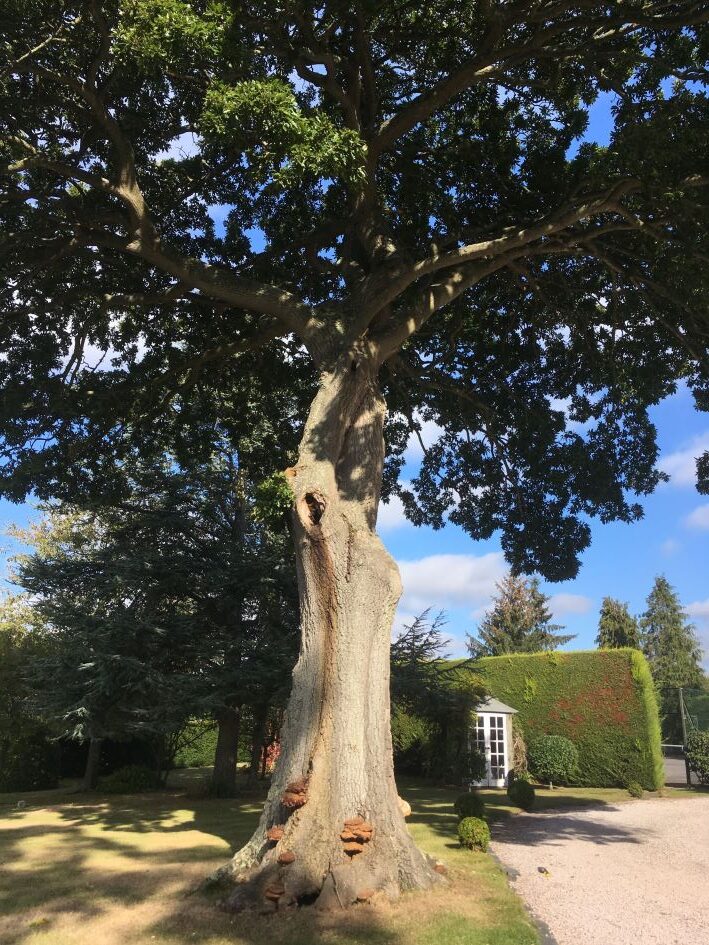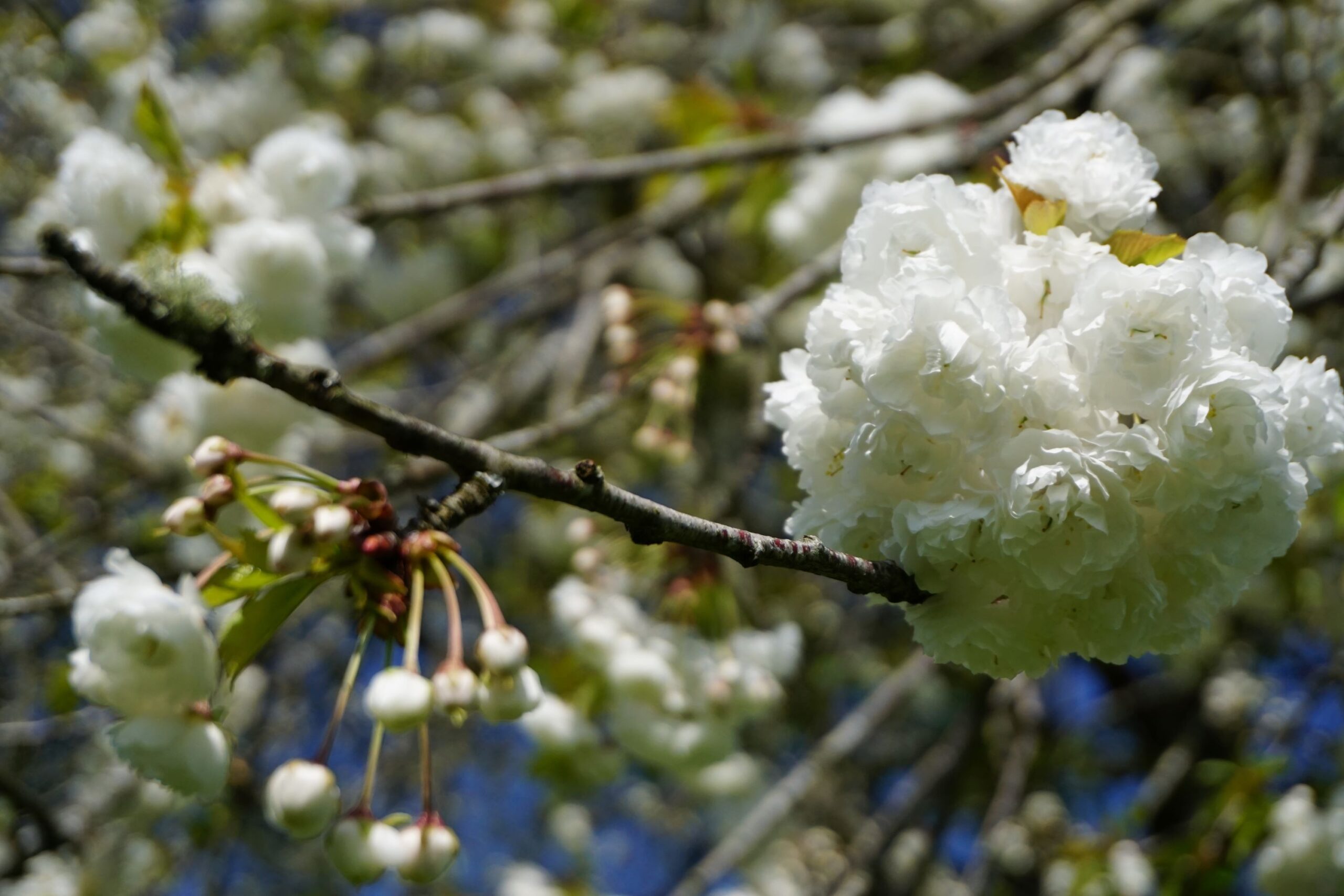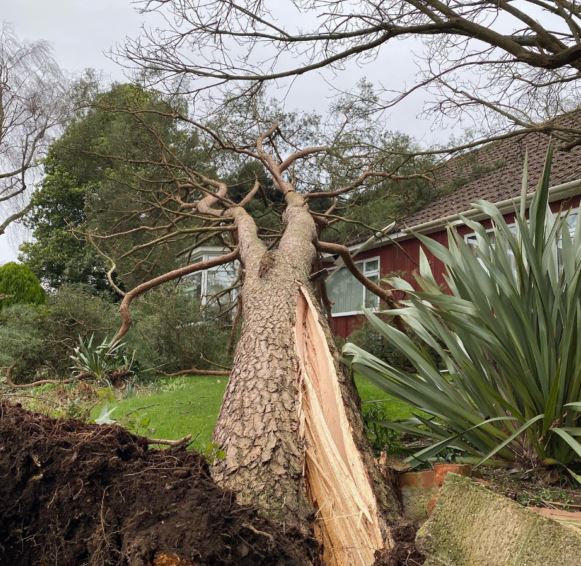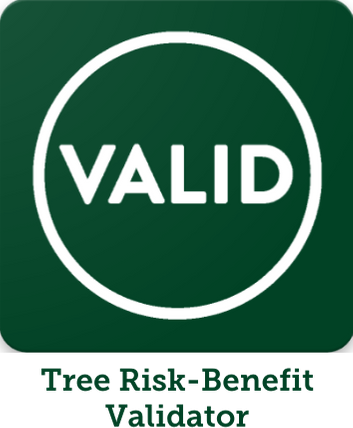Tree Condition and Safety Inspections and Tree Risk Assessments
(QTRA and VALID)
Tree owners may require a tree condition and risk assessment of their trees which are within falling distance of valuable targets such as their property or parked vehicles.
However, owners of trees also have a legal responsibility to ensure that their trees are in a safe condition if the trees in question overhang a neighbouring property, a highway or public right of way, in order to limit the risk of damage or injury caused to a member of the public or their property.
Trees provide a wide range of ecological benefits such as those listed below. However, trees also come with certain risks, such as the potential for falling branches or entire trees, which can pose a threat to people and property. To balance the ecological benefits of trees with the risks they pose, it is important to take a comprehensive approach that considers both the benefits and risks.
What are the benefits of trees on my property?
Well-managed trees provide positive amenity and environmental value to your property and with proper care and management, they are a valuable asset:
- Trees help ensure a resilience to climate change.
- Tree canopies slow up rainfall and the root systems absorb moisture and so can help to reduce flash flooding.
- Trees provide a sense of well-being through softening any urban developments.
- Trees mark the changing seasons with spring flowers, summer foliage, autumn fruit and bare winter branches.
- Trees, in all stages of life, are an essential habitat for insects, birds, mammals, fungi and other plants.
- As well as absorbing carbon dioxide and producing oxygen; trees filter, absorb and reduce pollutant gasses including ozone, sulphur dioxide, carbon monoxide and nitrogen dioxide.
- Trees can provide welcome shade on site during the hot summer months.
- Trees release scents and aromas which can result in positive emotional responses and add to the overall enjoyment of a site.
- Landscaping with trees can greatly increase property value. A beautiful, mature tree increases privacy, shade and generally improves a home’s curb appeal whilst other trees may provide fruit and visually appealing blossom.
What safety issues should I consider?
Whilst balancing the benefits of trees, there are some safety issues that responsible landowners and tree owners should be particularly be aware of such as any trees that:
- risk falling onto the road or footway including deadwood and broken branches
- obstruct road signs or street lighting
- hang low and prevent safe passage for vehicles, including high-sided vehicles
- prevent safe passage for pedestrians and cyclists on footways
- have damage, ill-health or disease
- are in conflict with neighbouring buildings
However, it is important to note that all trees are living, dynamic organisms subject to all weather events and even healthy trees, or parts of healthy trees, may fail in unusually high or unpredictable winds or violent storms. A thorough and regular professional inspection of trees on your site will help to highlight any important safety issues which need addressing to help reduce this risk.



Qualified and Experienced Consultants
If you wish to instruct someone to carry out an inspection on your trees you need to ensure that the person inspecting those trees can demonstrate that they have sufficient knowledge to do so.
Whether you have one tree or a whole woodland, our fully qualified, insured and experienced consultants can provide peace of mind to tree owners by undertaking tree risk assessments based on either two different methods of risk assessment methodology, QTRA or VALID. Our consultants will discuss with you which is the most suitable for your requirements with a brief summary shown below.

Tree Condition and Safety Inspections and Tree Risk-Benefit Management and Assessment (VALID)
Whether you are a managing a woodland or have just one tree, our consultants are able to help you with common sense tree risk-benefit management using the VALID app and strategies.
Whether you are a landowner, government agency or homeowner, you have a duty of care to manage risk from your trees falling or dropping branches. that duty of care says you should be reasonable, proportionate and reasonably practicable when managing risk to an acceptable for tolerable level.
The VALID system has a full range of easy to understand and common-sense tree risk-benefit management strategies. When a detailed assessment is required, a Tree Risk App is used by our consultants to give a tree risk rating in clear and easy to understand traffic light colour ratings.
Using this system we can work with duty holders to ensure that they can manage the risks and benefits from their trees effectively.

Tree Condition and Safety Inspections and Quantified Tree Risk Assessment (QTRA)
Tree safety management is a matter of limiting the risk of significant harm from tree failure whilst maintaining the benefits conferred by trees. Although it may seem counter intuitive, the condition of trees should not be the first consideration. Instead, tree managers should consider first the usage of the land on which the trees stand, which in turn will inform the process of assessing the trees.
The Quantified Tree Risk Assessment (QTRA) system applies established and accepted risk management principles to tree safety management. Firstly, the targets (people and property) upon which trees could fail are assessed and quantified, thus enabling tree managers to determine whether or not and to what degree of rigour a survey or inspection of the trees is required. Where necessary, the tree or branch is then considered in terms of both impact potential (size) and probability of failure. Values derived from the assessment of these three components (target, impact potential and probability of failure) are combined to calculate the probability of significant harm occurring.
The system moves the management of tree safety away from labelling trees as either ‘safe’ or ‘unsafe’, thereby requiring definitive statements of tree safety from either tree surveyors or tree managers. Instead, QTRA quantifies the risk of significant harm from tree failure in a way that enables tree managers to balance safety with tree value and operate to a predetermined limit of reasonable or acceptable risk.

